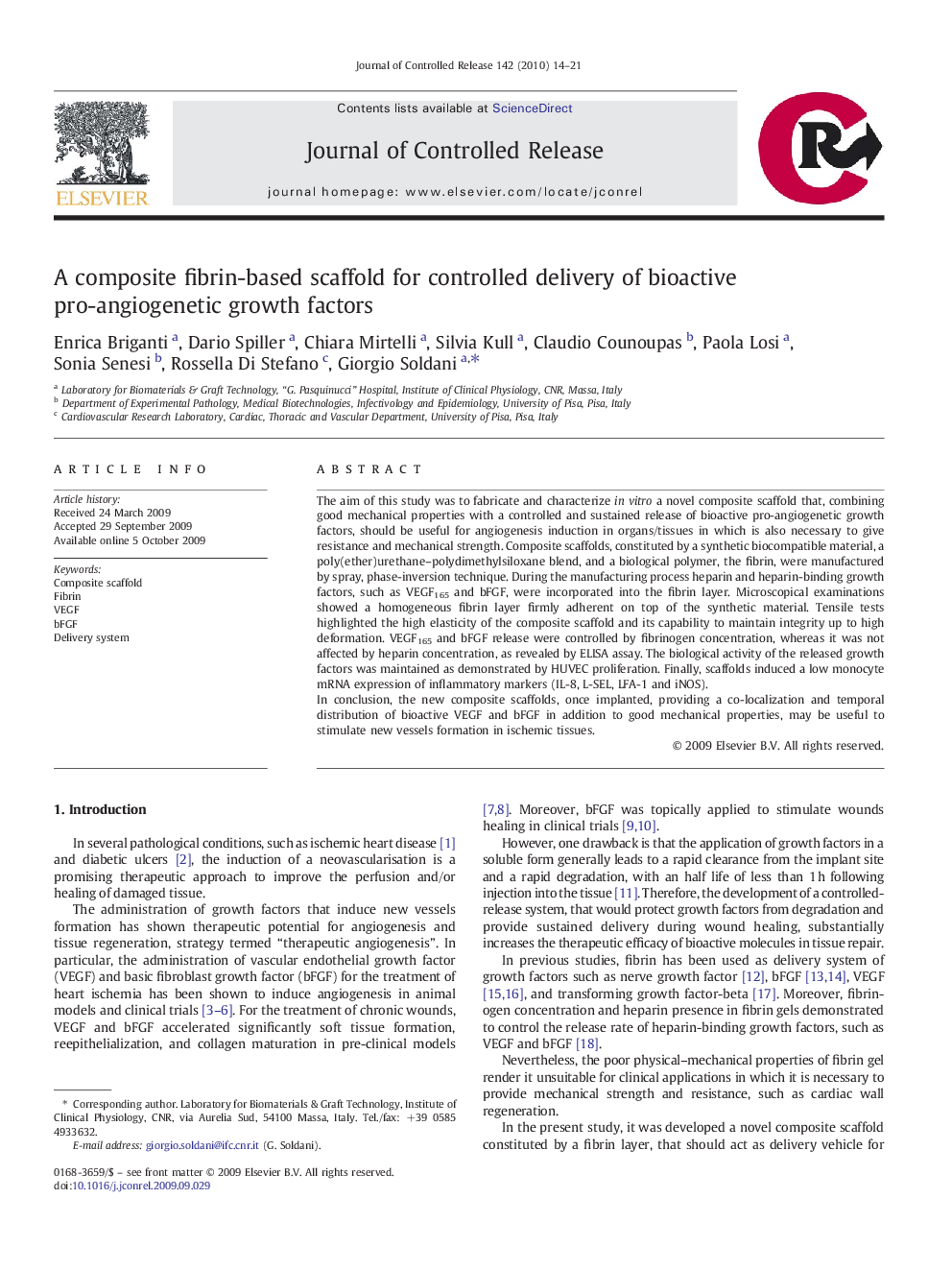| کد مقاله | کد نشریه | سال انتشار | مقاله انگلیسی | نسخه تمام متن |
|---|---|---|---|---|
| 1425851 | 986783 | 2010 | 8 صفحه PDF | دانلود رایگان |

The aim of this study was to fabricate and characterize in vitro a novel composite scaffold that, combining good mechanical properties with a controlled and sustained release of bioactive pro-angiogenetic growth factors, should be useful for angiogenesis induction in organs/tissues in which is also necessary to give resistance and mechanical strength. Composite scaffolds, constituted by a synthetic biocompatible material, a poly(ether)urethane–polydimethylsiloxane blend, and a biological polymer, the fibrin, were manufactured by spray, phase-inversion technique. During the manufacturing process heparin and heparin-binding growth factors, such as VEGF165 and bFGF, were incorporated into the fibrin layer. Microscopical examinations showed a homogeneous fibrin layer firmly adherent on top of the synthetic material. Tensile tests highlighted the high elasticity of the composite scaffold and its capability to maintain integrity up to high deformation. VEGF165 and bFGF release were controlled by fibrinogen concentration, whereas it was not affected by heparin concentration, as revealed by ELISA assay. The biological activity of the released growth factors was maintained as demonstrated by HUVEC proliferation. Finally, scaffolds induced a low monocyte mRNA expression of inflammatory markers (IL-8, L-SEL, LFA-1 and iNOS).In conclusion, the new composite scaffolds, once implanted, providing a co-localization and temporal distribution of bioactive VEGF and bFGF in addition to good mechanical properties, may be useful to stimulate new vessels formation in ischemic tissues.
Local time-averaged gas holdup in a 10.2 cm diameter fluidized bed is determined using X-ray computed tomography (CT) over a range of superficial gas velocity (Ug), side air injection flow rate (Qs), and fluidized bed material. With the introduction of side air injection, which simulates the immediate volatilization of biomass in a fluidized bed gasifier, a distinctive plume is observed along the reactor wall above the side injection port. Of the three bed materials examined, ground corncob fluidization is least affected by side air injection and shows the highest overall gas holdup while glass bead fluidization is much more affected by side air injection and has the lowest overall gas holdup.Figure optionsDownload as PowerPoint slide
Journal: Journal of Controlled Release - Volume 142, Issue 1, 25 February 2010, Pages 14–21